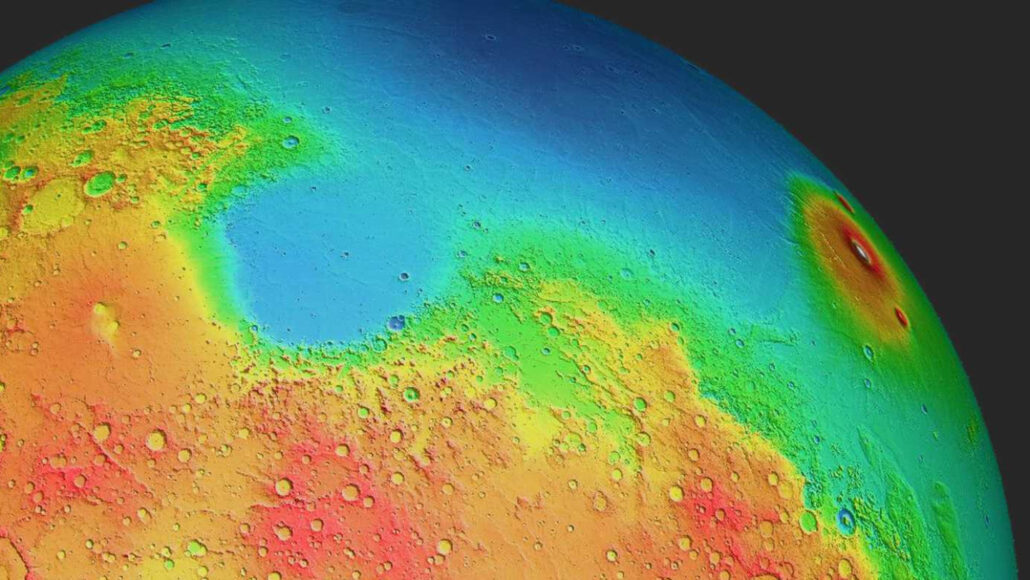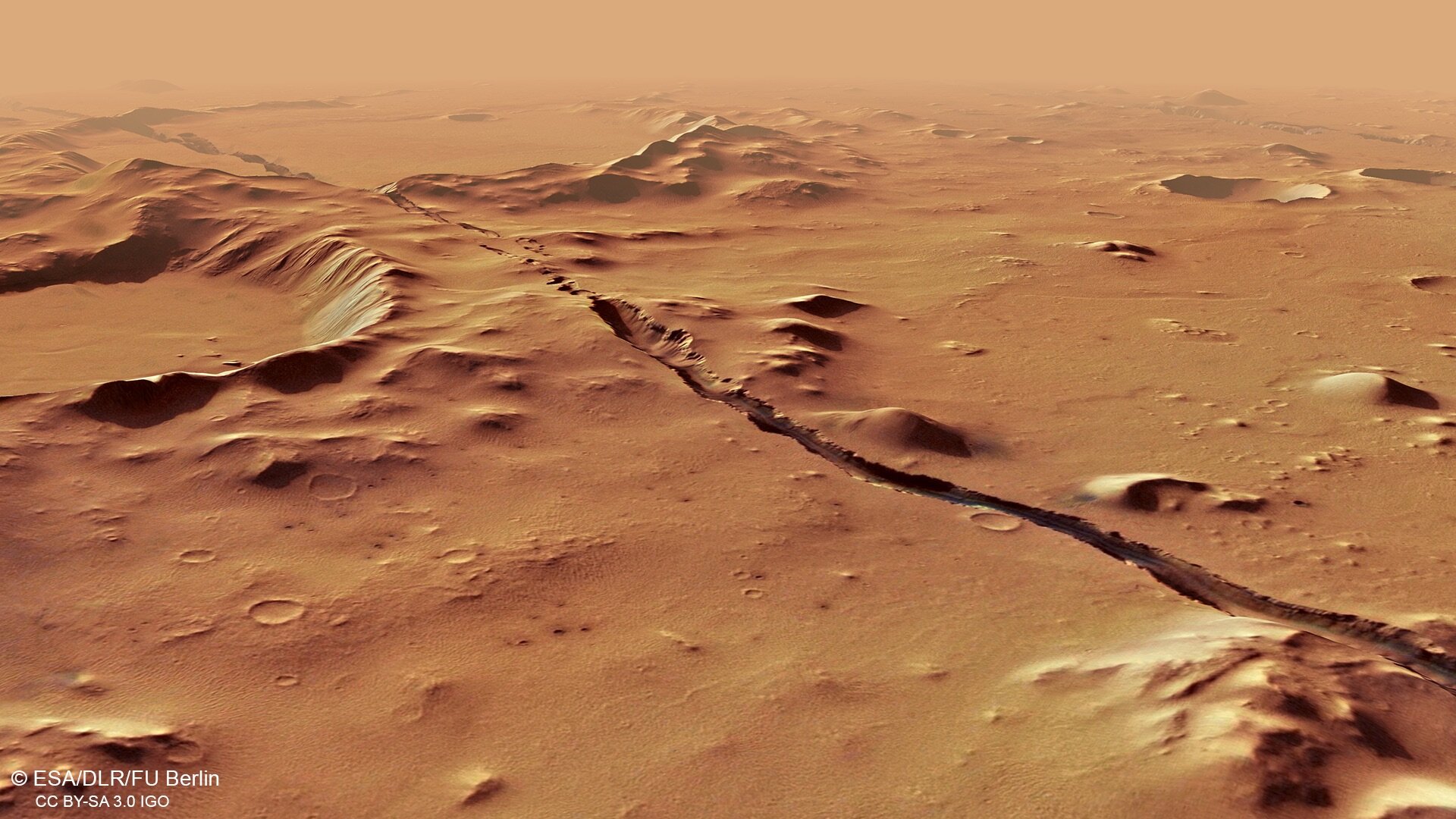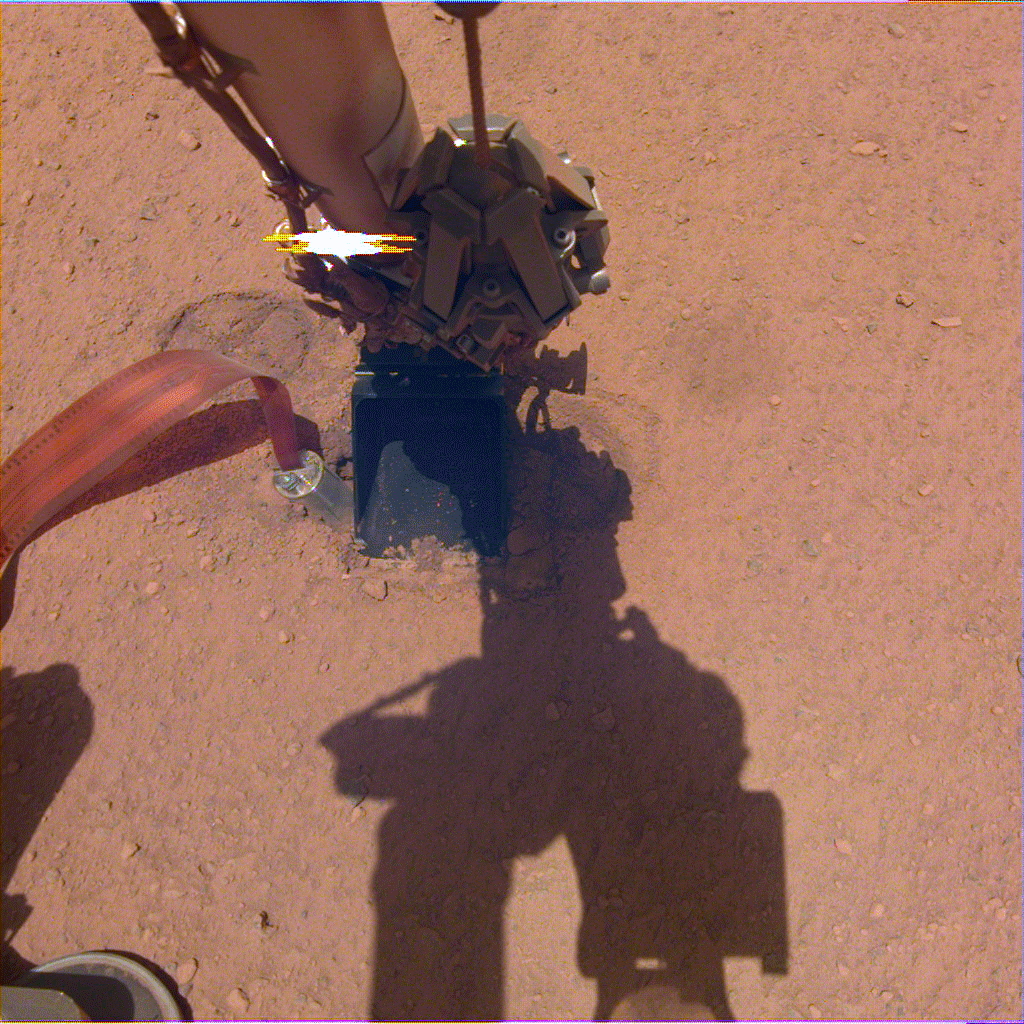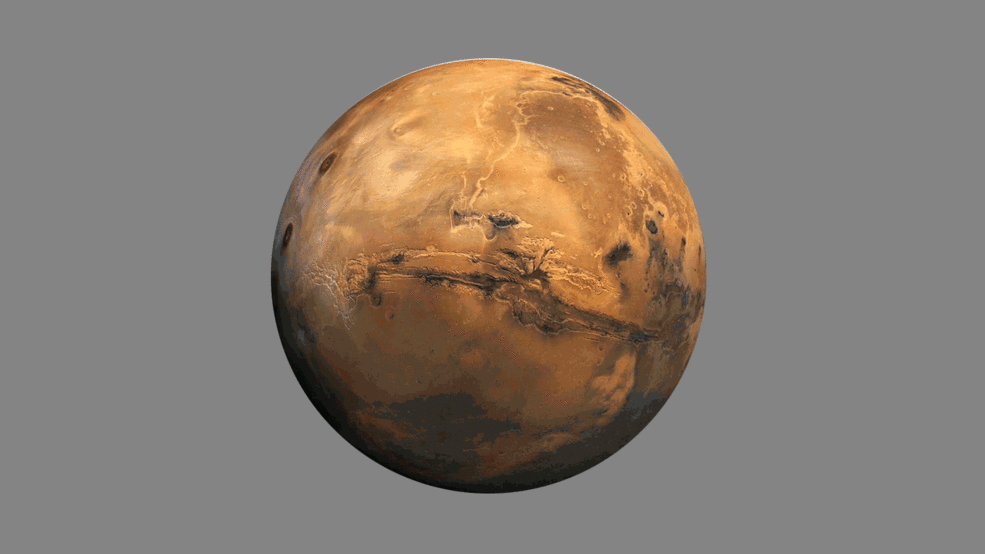
The northern hemisphere of Mars (shown in false color) is mostly lowlands (blue), while the southern hemisphere is higher and more mountainous. This elevation map of the Red Planet was created from data from NASA’s Mars Global Surveyor. MARS ORBITER LASER ALTIMETER SCIENCE TEAM
Planetary scientists now know how thick the Martian crust is, thanks to the strongest Marsquake ever observed.
On average, the crust is between 42 and 56 kilometers thick, researchers report in a paper to appear in Geophysical Research Letters. That’s roughly 70 percent thicker than the average continental crust on Earth.
The measurement was based on data from NASA’s InSight lander, a stationary seismometer that recorded waves rippling through Mars’ interior for four Earth years. Last May, the entire planet shook with a magnitude 4.7 quake that lasted more than six hours (SN: 5/13/22). “We were really fortunate that we got this quake,” says seismologist Doyeon Kim of ETH Zurich.








